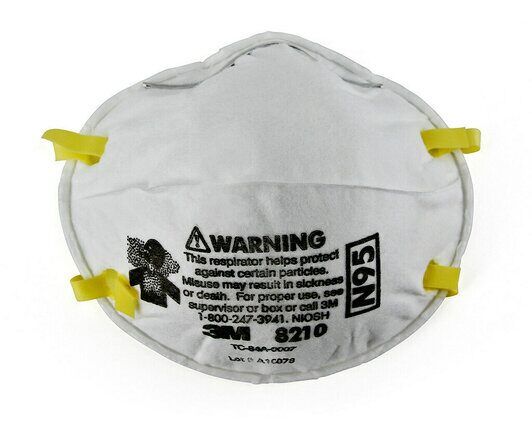Examining Whether ER Workers can Reliably Reuse N95 Masks
A high proportion of N95 masks failed to fit properly with the extended use and reuse recommended by the CDC for conserving PPE during the shortage.

A high proportion of N95 masks worn by emergency room staff during a surge of patients with coronavirus 2019 (COVID-19) became ill-fitting with the extended use or reuse recommended by the CDC to conserve personal protective equipment (PPE) during critical shortage.
“The inadequate national PPE stockpile has forced healthcare workers to reuse N95s when previously we had been following the pre-pandemic CDC guidelines to discard N95s after a single patient encounter,” Nida Degesys, MD, Department of Emergency Medicine, University of California, San Francisco, explained to ContagionLive®. “When there is a national shortage of a critical item, we are left without a choice. We need to conserve and preserve whenever possible.”
Degesys and colleagues noted that previous studies to determine if masks retain proper fit have been conducted in laboratories, rather than in the clinical environment.
In their study of the fit and function of the N95s under the conditions of a busy emergency medicine department, the investigators collected the masks from a convenience participant sample of 68 health care workers—including physicians, nurses, nurse practitioners, physician assistants and patient care technician—during various times in their shifts between April 4 to 6, 2020.
All participants had passed the standard Occupational Safety and Health Administration (OSHA)-mandated N95 fit text within the last 1 to 2 years. For each participant, the investigators documented mask type, shifts used, and donnings/doffings.
The dome-shaped masks (3M 1860) and the duckbill-shaped) masks (Kimberly-Clark 46727 or Halyard 4867) were subjected to qualitative fit testing, with a standardized hood and a bitter testing solution provided by 3M. If the participants could taste the solution, the mask was deemed ill-fitting and replaced.
The investigators reported that masks worn by 38.2% of the participants fit improperly when checked during various periods of reuse or extended use. 12 of 17 (70.6%) duckbill masks failed, compared with 14 of 51 (27.5%) dome-shaped masks.
With the high failure rate of duckbill masks, the investigators conducted a sensitivity analysis to examine the factors associated with the fit test failure of only the dome-shaped masks.They determined that failure rate increased with the number of shifts worn, the number of times they were put on and taken off, and the hours worn.
“The results of this study have led us to make some preliminary recommendations that duckbill masks should not be conserved if possible,” Degesys commented. “However, our data do not suggest that it would be unsafe for single use.”
The investigators acknowledge limitations of this observational study, including possibly inconsistent mask quality and unobserved characteristics of wearer. In addition, they note that failed fit tests may not necessarily result in increased rates of infection.
“While this is the first study to look at fit after reuse/extended use, I am sure it will not be the last,” Degesys said. “Further studies looking at precisely when masks fail will be very helpful in guiding hospital policies should we find ourselves in another shortage. Additionally, we need to develop easily accessible decontamination methods that do not affect the integrity or fit of the mask,” she said.
